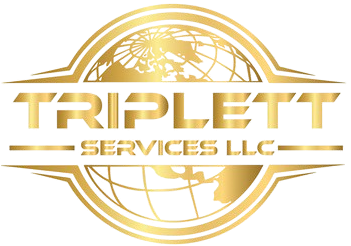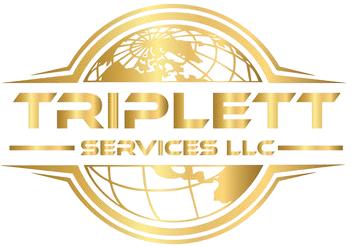Why Should Texas Companies Prioritize Third-Party Risk Management?

Many enterprise risks are realized through the supply chain. Disruptions, product quality defects, logistics failures, and cybersecurity incidents are frequently introduced by external partners. Information flows across multi-party ecosystems create a layer of risk that, if unmanaged, undermines business resilience and customer trust.
For Texas companies—and organizations with global footprints—robust information third-party risk management (ITPRM) is essential to protect data, safeguard IP, and ensure compliant, reliable products and services.
Why in particular information risk in the supply chain matters?
- External entities often represent and propagate enterprise risk, including privacy breaches, IP leakage, and regulatory noncompliance.
-
- The weakest link in a business ecosystem is frequently a vendor, supplier, or outsourcing partner. Without strong controls, even a compliant enterprise can face violations and material losses.
-
- Information movement and privacy-sensitive data—design documents, customer data, and IP—pose a costly risk if not properly managed across multi-party relationships.
-
- Information risk is a leading driver of cyber insurance costs and risk exposure; addressing it can improve coverage options and remediation timelines.
Texas-located, globally aware Triplett Services serves the Texas market, but offers strength in managing large, complex supply chains that span multiple states and countries.
We help enterprises define risk tolerance, map information at risk, and define controls that are designed to manage risk across the supply ecosystem—without geographic limitations.
Our approach is pragmatic, policy-driven, and engineered for scale, whether you operate in Texas, across North America, or worldwide.
Foundation of controls for managing information risk
- Privacy and data protection: HIPAA/PHI, ITAR/EAR, PCI, and other sector-specific requirements; plus international data transfer considerations.
-
- Intellectual property controls: safeguarding design and process information shared with outsourcing and manufacturing partners; protecting trade secrets across borders.
-
- Information governance: contractually embedding security expectations, incident notification, evidence verification, and continuous assurance across sub-tiers.
-
- International regulatory compliance: cross-border data flows, export controls, and multi-jurisdictional incident response planning.
Information-centric third-party risk strategies
- Establish an information risk tolerance and identify critical and sensitive data in your ecosystem.
-
- Inventory and locate critical/sensitive information across the supply chain, including IP and proprietary data.
-
- Classify information and define controls tailored to each risk tier (high-risk data vs. less sensitive data).
-
- Control privileged access and ensure robust systems management for third-party environments.
-
- Verify and validate required controls through audits, assessments, and evidence collection.
-
- Implement information control violations detection, response playbooks, and incident processes.
-
- Integrate information risk management with broader IT risk, privacy, and business continuity programs.
-
- Extend governance to international suppliers and partners, ensuring consistent practices across jurisdictions.
People, process, policy, technology, governance Information third-party risk management cannot be solved by technology alone.
It requires a prudent blend of:
- People: role-based responsibilities, vendor risk ownership, and cross-functional teams.
-
- Process: formal risk assessments, control verification, and incident response playbooks.
-
- Policy: clear expectations in vendor contracts and information-sharing arrangements.
-
- Technology: monitoring, data loss prevention, access controls, and anomaly detection.
-
- Governance: ongoing oversight, executive sponsorship, and continuous improvement.
A practical approach for risk-based decisions
- Perform information flow risk assessments focusing on critical data, product design, and IP.
-
- Evaluate trust levels across the supply chain and tiered dependencies when prioritizing mitigations.
-
- Establish terms and conditions that require the supply chain to meet defined capabilities and practices.
-
- Use risk-based prioritization to allocate resources to the most impactful information risks.
-
- Consider international regulatory compliance implications and ensure cross-border controls are verifiable.
Why choose Triplett Services — Experience, Differentiation and Leadership?
- Global experience, Texas roots: Triplett Services brings deep local insight with a proven track record managing multi-state and multi-national supply chains. We translate global best practices into solutions that fit your industry and risk posture.
-
- Distinguished leadership: Clif Triplett, Consulting Principal, combines public and private sector expertise with hands-on execution. His career includes high-impact roles that shaped national cybersecurity and risk management strategy and actions.
-
- Presidential Executive Fellow for IT and Cybersecurity: As an advisor to the President of the United States, Clif identified systemic issues in the Federal government and led risk mitigation efforts at the national level. This experience is foundational in our method: rigorous diagnostics, wide-ranging stakeholder engagement, and scalable remediation playbooks.
-
- Industrial-scale governance and manufacturing insight: Clif served as Process Officer for General Motors, overseeing information assurance across a global network of over 600 plants. This experience translates to robust controls for complex manufacturing and engineering supply chains, including IP protection, privilege management, and supplier risk transparency.
-
- Practical, people-first approach: We blend policy, governance, and culture with technology and process. Our methodology requires collaboration across procurement, legal, security, and operations—ensuring risk decisions reflect real-world constraints and incentives.
-
- Comprehensive, evidence-based controls: Our programs emphasize information risk tolerance, precise data inventories, control verification, and incident response readiness. We ensure contractual alignment with suppliers and continuous monitoring across the ecosystem, not just in your own environment.
-
- Global perspective with Texas focus: While our work spans borders, we tailor solutions to Texas industries and their regulatory landscapes, delivering scalable risk management that remains practical and auditable across jurisdictions.
Frequently Asked Questions (FAQs)
Why choose Triplett Services to analyze your cybersecurity tool portfolio?
Triplett Services brings industry-leading governance, regulatory insight, and portfolio optimization expertise, with hands-on experience across national critical infrastructures, defense organizations, and major global enterprises.
We start with what you own, map to modern threat profiles, and deliver a practical, risk-based roadmap that prioritizes foundational controls before advanced tooling.
In short, we turn your existing investments into a measurable, auditable defense, while providing a clear path to in-house capability where feasible.
With so many standards - where to begin?
Start with a current-state tool inventory, map to your risk tolerance, and align controls to core standards and regulatory requirements (e.g., NIST CSF, CMMC, PCI, HIPPA, IEC 62443).
Build a baseline of requirements and existing capabilities before expanding tooling.
When is the right time to analyze my enterprise portfolio?
Now, especially if facing regulatory requirements, rising cyber insurance premiums, or expanding digital/OT footprints.
Immediately after a penetration test to understand if the enterprise may already be in possession of a tool that can be utilized to mitigate the identified vulnerability.
How does portfolio analysis support a business case for investment?
By quantifying coverage gaps, risk exposure, and ROI from consolidation or targeted investments; then presenting a prioritized roadmap aligned with risk tolerance.
What’s included and not included in the risk analysis of cybersecurity tools?
Included: tool coverage, interoperability, governance implications, and risk scoring.
Not included in the initial cybersecurity portfolio analysis: detailed configuration analysis, unrelated IT assets outside cybersecurity scope or non-controlled processes. The initial focus is on the potential of the portfolio and functional / threat gaps.
What will enterprises do with a portfolio analysis?
Use it to justify purchases, renegotiate vendor terms, improve governance, prepare for audits, make product selections, optimize their portfolio of tools, examine the services provided by managed service providers, and guide cybersecurity budgeting and strategy.
🔚 Contact Triplett Services today
If you’re ready to bring clarity to your cybersecurity portfolio, Triplett Services offers a tailored assessment to identify gaps, optimize coverage, and deliver a practical roadmap aligned with regulatory compliance and risk management.
Contact Triplett Services today to schedule your cybersecurity portfolio assessment and begin strengthening your defense against today’s expanding threat landscape.
👉 Let’s secure Texas’ future together
Related Posts

Refreshing Your Cybersecurity Tool Portfolio in Today’s Threat Landscape
Tool evolution in a changing threat landscape Enterprises continually adapt their cybersecurity toolkits in response…

🔐 Zero Trust Architecture for Texas Enterprises
Texas is a powerhouse of commerce, energy, manufacturing, and logistics — with global operations, major…


Leave a Reply